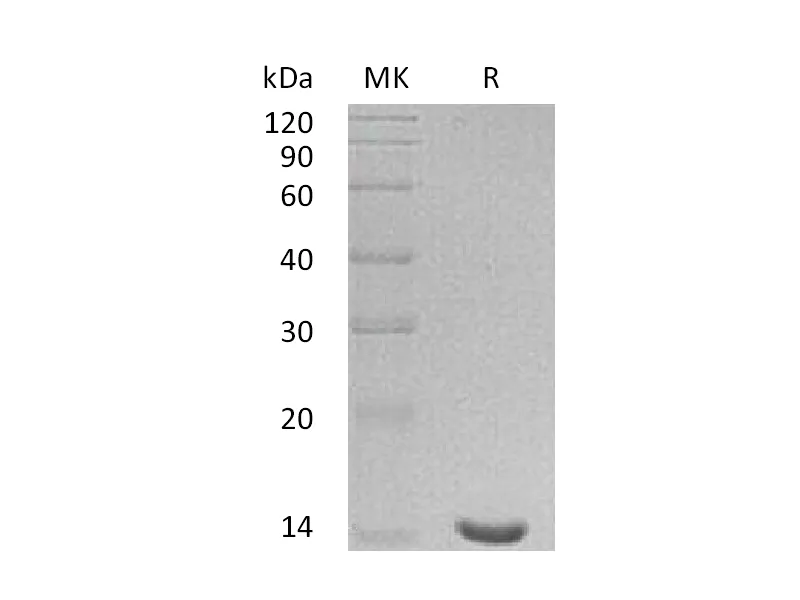
Size2:50μg price2:$248
Size3:500μg price3:$1240
| Name | Recombinant Human LGALS7 |
| Purity | Greater than 95% as determined by reducing SDS-PAGE |
| Endotoxin level | <1 EU/µg as determined by LAL test. |
| Construction | Recombinant Human Galectin-7 is produced by our E.coli expression system and the target gene encoding Met1-Phe136 is expressed. |
| Accession # | P47929 |
| Host | E.coli |
| Species | Human |
| Predicted Molecular Mass | 15.07 KDa |
| Buffer | Lyophilized from a 0.2 μm filtered solution of 20mM Tris-HCl, 150mM NaCl, 1mM EDTA, 5% Trehalose, pH 8.0. |
| Form | Lyophilized |
| Shipping | The product is shipped at ambient temperature.Upon receipt, store it immediately at the temperature listed below. |
| Stability&Storage | Store at ≤-70°C, stable for 6 months after receipt.Store at ≤-70°C, stable for 3 months under sterile conditions after opening. Please minimize freeze-thaw cycles. |
| Reconstitution | Always centrifuge tubes before opening.Do not mix by vortex or pipetting.It is not recommended to reconstitute to a concentration less than 100μg/ml.Dissolve the lyophilized protein in distilled water.Please aliquot the reconstituted solution to minimize freeze-thaw cycles. |
Alternative Names
Galectin-7; Gal-7; HKL-14; PI7; p53-Induced Gene 1 Protein; LGALS7; PIG1; LGALS7B
Background
The Galectin family of proteins, with specificity for Nacetyllactosamine containing glycoproteins, consists of beta-galactoside binding lectins containing homologous carbohydrate recognition domains (CRDs).They also possess hemagglutination activity, which is attributable to their bivalent carbohydrate binding properties. Galectins are active both intracellularly and extracellularly. Although they are localized primarily in the cytoplasm and lack a classical signal peptide; they can be secreted by one or more as yet unidentified non-classical secretory pathways. They have diverse effects on many cellular functions including adhesion, migration, polarity, chemotaxis, proliferation, apoptosis, and differentiation. Galectins may play a key role in many pathological states, including autoimmune diseases, allergic reactions, inflammation, tumor cell metastasis, atherosclerosis, and diabetic complications.
Note
For Research Use Only , Not for Diagnostic Use.
